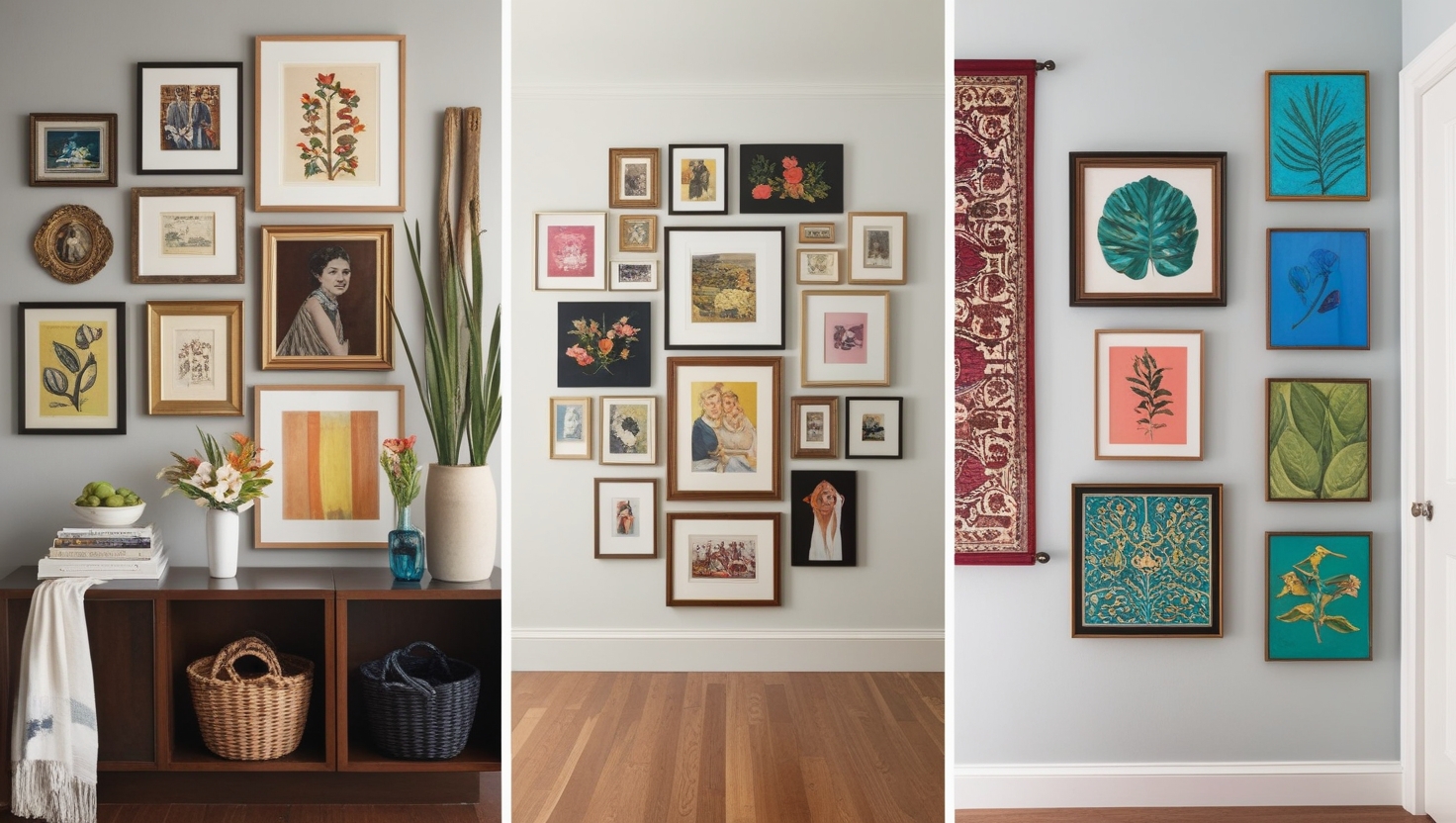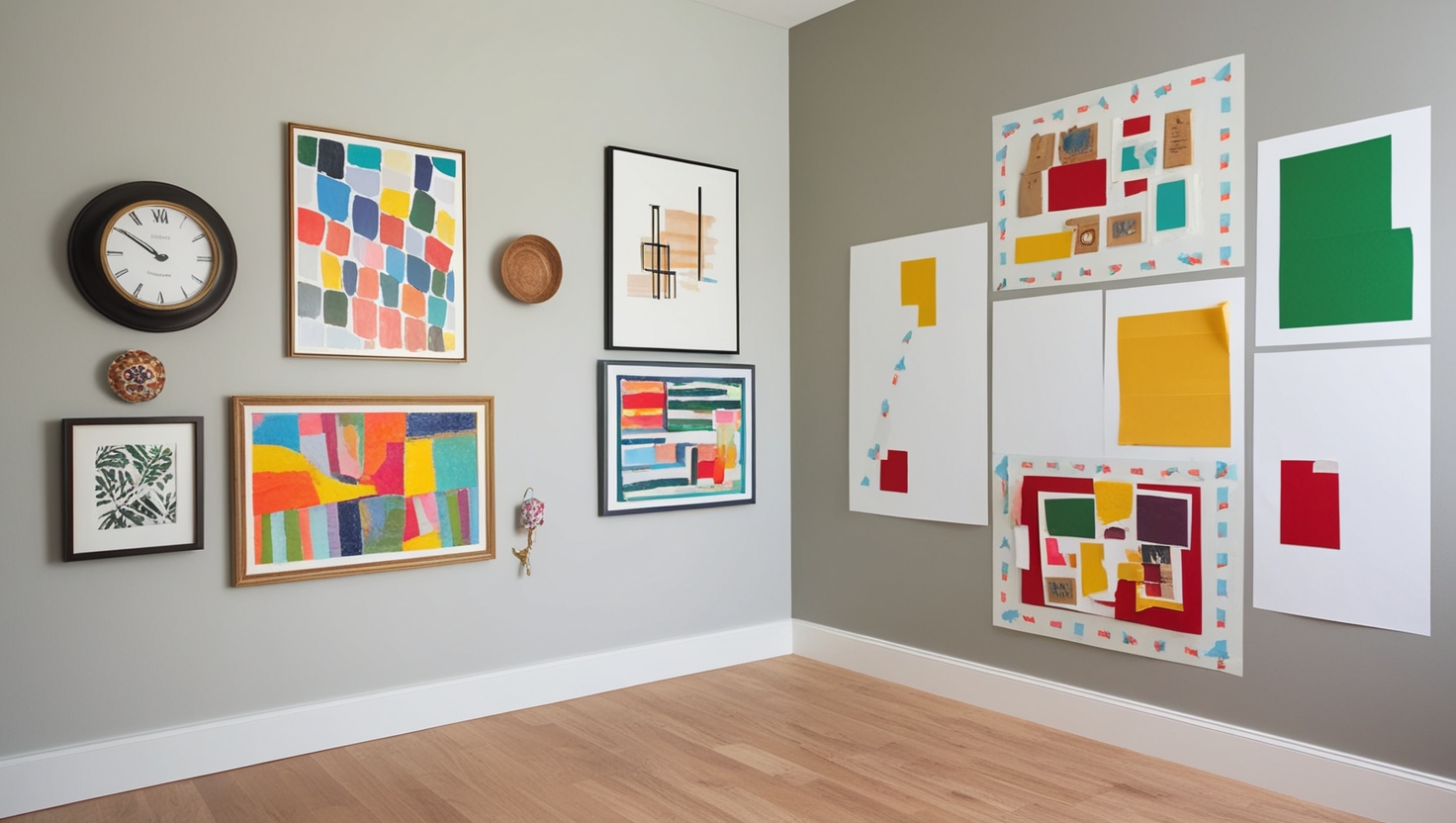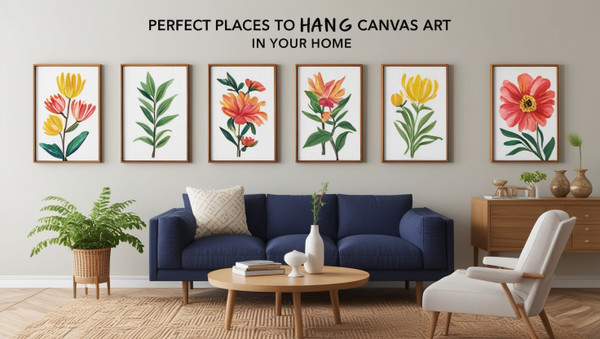Perfect Places to Hang Canvas Art in Your Home
Posted by MintSuper Art on 26th Dec 2024
Hanging canvas art in your home can instantly add warmth, personality, and a touch of creativity to any room. It’s like turning your walls into a canvas of self-expression. But figuring out where to hang it and how high it should be can be tricky. Should it be centered, above furniture, or in a gallery wall? Don’t worry! Keep reading for easy tips and tricks to help you hang your art in the perfect spot, ensuring it enhances your space just the way you envision.
Key Takeaway
- Hang art at eye level for the best view.
- Keep 4-6 inches of space above furniture when hanging art.
- Use a plan to test arrangements before making holes in the wall.
Finding the Ideal Spot for Every Canvas
Hanging art is about balance—between visibility, proportion, and purpose. In living rooms, centre large canvases at eye level. Bedrooms work well with calming pieces above the headboard, while hallways benefit from vertical art to guide the eye. Lighting can make or break a display, so consider natural angles and shadows.
General Placement Guidelines
Credits: Beyond The Stage Homes (Home Staging & Design)
Eye Level Hanging
Hanging art at eye level transforms a room into a balanced and inviting space. This thoughtful placement ensures that the artwork feels naturally integrated, allowing everyone to admire it comfortably without tilting their heads. Eye-level placement creates harmony, making the art an accessible and engaging part of the room’s design.
Key Tips for Eye-Level Art Placement:
- Ideal Height: Position the center of the artwork 56 to 60 inches from the floor. This range aligns with the average viewer's line of sight.
- Single Piece or Gallery Wall: Whether it’s a single artwork or a curated collection, maintaining eye level ensures a cohesive and polished look.
- Enhances Accessibility: Art placed at this height feels approachable and welcoming, adding to the room's overall charm.
By keeping your artwork at eye level, you ensure it doesn’t just hang on the wall but becomes an integral part of the space’s character and appeal.
Above Furniture
When hanging art above furniture like a sofa, coffee table, or sideboard, leave some space between the furniture and the art—about 4 to 6 inches is ideal. This distance helps the art blend with the room's furniture rather than floating above it. It creates a sense of connection between the artwork and the surrounding space, giving the room a more cohesive and polished look.(1)
Hanging art too high above furniture can make the room feel unbalanced. It creates a sense of detachment, as if the art is floating in space instead of being part of the room. Keeping the art closer to the furniture creates a more grounded, intimate atmosphere. It helps the artwork feel like it belongs with the furniture, making the space feel more comfortable and visually complete.
Living Room Focus
In living rooms, art can transform into a captivating focal point that enhances the room's personality. The ideal placement for artwork is above key seating areas, like the sofa, where it naturally draws the eye and sets the tone for the space.
Tips for Hanging Art Above a Sofa:
- Height Matters: Position the artwork 8 to 12 inches above the sofa. This height keeps the piece visually connected to the furniture while ensuring it’s comfortably in line of sight.
- Focus on Impact: Choose a bold abstract or a serene landscape to complement the room’s mood and style.
- Create a Centerpiece: A well-placed piece immediately grabs attention and becomes a conversational highlight for guests.
Art in the living room isn’t just decoration—it’s a statement. The right piece, thoughtfully placed, can energize the space and create a welcoming atmosphere for everyone to enjoy.
Creative Arrangements

Gallery Walls
A gallery wall is a creative way to display multiple art pieces together. When creating a gallery wall, treat the entire grouping as one unit. Place the center of the collection at eye level to maintain balance. Vary the sizes and frame styles of the pieces to add depth and interest, making the gallery more dynamic.
Gallery walls are more than just art on a wall—they tell a story. Each piece adds to the overall narrative, making the arrangement feel personal and meaningful. Whether it’s family photos, vintage prints, or modern art, this display style can spark conversation and reflect your unique taste. Grouping art in this way also lets you experiment with different styles and themes, creating a visual feast for the eyes.
Unexpected Spaces
Art has the power to elevate unexpected spaces like hallways, kitchens, and even garages, turning them into dynamic and inviting areas. These often-overlooked spots can shine with the right piece, adding personality and breaking away from traditional décor norms.
Ideas for Incorporating Art in Unconventional Spaces:
- Kitchens: Bright, colorful artwork can make the kitchen feel warmer and more welcoming, adding a creative touch to the heart of the home.
- Hallways: Transform transitional areas into mini galleries with a series of carefully chosen pieces that guide the eye and spark interest.
- Garages and Laundry Rooms: Personalize these functional spaces with art that reflects your taste, making them feel more creative and engaging.
Don’t be afraid to think outside the box. Whether bold or subtle, art in unexpected places infuses charm and energy, making every corner of your home a statement of style. (2)
Leaning Art
Leaning art instead of hanging it is a casual, yet stylish way to display smaller pieces. Place art on shelves, mantels, or any flat surface to give the room a relaxed, cozy feel. This method allows for easy adjustments and creates a welcoming vibe, perfect for spaces that feel too formal or stiff with traditional hanging.
Leaning art is perfect for creating a lived-in look. It feels personal, like you’ve chosen the pieces to display in a more informal, approachable way. By pairing the art with a few decorative objects, such as books or plants, you can create a balanced, interesting display. This approach gives your space an inviting, curated feel without being too structured or rigid. It’s a simple, effective way to make a room feel warm and dynamic.
Special Considerations
Spacing Between Pieces
When arranging multiple pieces of art on a wall, spacing is key to creating a harmonious and visually appealing display. Proper spacing ensures each piece stands out individually while contributing to a cohesive overall look.
Guidelines for Art Spacing:
- Ideal Distance: Maintain 2 to 3 inches of space between each piece. This balance connects the artworks without making the arrangement feel crowded.
- Adjust for Size: Larger pieces may benefit from slightly wider spacing, while smaller ones can be closer together to create unity.
- Mind the Wall Space: Consider the dimensions of the wall to ensure the display feels proportionate and intentional.
Spacing impacts the mood of the arrangement. Too close, and it feels cluttered; too far, and the pieces lose their connection. Think of it like arranging flowers—each artwork needs room to breathe, yet together, they create a unified, stunning display.
Height Adjustments for Low Ceilings
Rooms with low ceilings can feel more cramped and closed off. One way to counteract this is by hanging art a little lower than usual. Instead of the typical eye-level placement, try lowering the artwork slightly to create a more open feel. This adjustment can help balance the space and make the room feel less confined.
By placing art lower on the wall, you draw the eye downwards and create the illusion of more space. The art becomes a focal point that adds verticality to the room, tricking the eye into perceiving the ceiling as higher. This is a simple and effective way to make a room with low ceilings appear more expansive and less claustrophobic, offering a sense of height without major renovations.
Testing Arrangements
Before you start making holes in the wall, take the time to experiment with different arrangements. Lay the art pieces on the floor in front of the wall to see how they look together. This gives you a clear sense of how they will fit on the wall and helps you visualize the best placement without committing to any nails or hooks.
This step is like a practice run for your art arrangement. It’s a chance to adjust and rearrange until everything feels just right. Not only does it save time and effort, but it also helps prevent mistakes. Testing the layout on the floor first allows you to play with different placements and gives you the freedom to try new ideas. Plus, it’s a fun, hands-on way to plan the perfect display before you make it permanent.
General Guidelines

Proportional Sizing
One of the easiest ways to ensure your artwork complements your furniture is by using the 2/3 rule. This simple guideline suggests that the width of the artwork should be at least two-thirds the width of the furniture beneath it. Following this rule creates a sense of balance and harmony, making the arrangement visually pleasing and well-coordinated. (3)
Tips for Proportional Artwork:
- Match Furniture Size: Choose artwork that is proportional to the furniture, such as sofas, tables, or beds, to avoid overwhelming or underwhelming the space.
- Avoid Disconnection: Oversized art can make smaller furniture appear out of scale, while undersized art can feel disconnected from the arrangement.
- Enhance the Look: Properly sized artwork complements the furniture, bringing the entire room together in a cohesive and thoughtful way.
By following the 2/3 rule, your artwork becomes an integral part of the design, enhancing the furniture below it and creating a unified, balanced aesthetic.
Planning the Layout
Before you start hanging your artwork, it’s important to plan the layout to avoid unnecessary holes in the wall. One way to do this is by arranging the pieces on the floor first. You can also use paper templates or painter’s tape to mark the layout directly on the wall. This method lets you experiment with different placements and visualize how the art will look in the space before committing to any permanent changes.
Taking the time to plan your layout ahead of time can save you a lot of frustration and mistakes. It’s like drawing a map before heading on a trip. You’ll know exactly where everything should go, and the process of hanging your art will be smoother and more enjoyable. Plus, it gives you the flexibility to adjust and fine-tune the arrangement until it feels just right.
FAQ
How high should I hang canvas art above furniture?
Follow the general rule of hanging art 6-8 inches above the top of your furniture piece. This eye level placement creates visual harmony between your wall art and furniture. For a piece of art above a sofa or other large piece of furniture, this height ensures your art acts as a natural focal point without floating too high on the wall.
What tools do I need for hanging canvas art properly?
You'll need basic tools including a measuring tape, spirit level, and pencil to lightly mark your walls. These essentials ensure your art pieces hang straight and at the right height. A tape measure helps you center your canvas art precisely, while a spirit level keeps everything aligned perfectly.
How do I create an eye-catching gallery wall?
Gallery walls work best when you mix different sizes of canvas prints and framed art. Start with a large piece of art as your anchor, then arrange smaller pieces around it. Botanical prints, black and white art prints, and various canvas art pieces can create an engaging wall space that shows off your art collection.
Where should I hang art in my living room and dining room?
Your living room and dining room offer prime wall space for hanging artwork. In living rooms, hang large canvas pieces above sofas or create gallery walls on blank walls. For dining rooms, a single piece or framed canvas positioned at eye level can create an elegant focal point that enhances your space.
What's the rule of thumb for hanging large scale canvas art?
Large scale art and large canvas prints should be hung 57-60 inches from the floor to the center of the piece - this is standard art gallery height. For custom canvas or large art pieces, ensure you have enough wall space to allow the piece to breathe and work well with your room's proportions.
Conclusion
Wrapping up, hanging canvas art in your home can be easy and fun! Remember to hang at eye level, keep space above furniture, and plan your layout. By following these tips, anyone can create a beautiful display of art that brings joy to their home.
References
- https://www.art.com/blog/where-to-hang-art
- https://chrislovesjulia.com/large-art-when-to-hang...
- https://jenniferallevato.com/blogs/news/roundup-ti...

